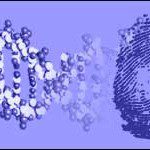Florida’s DNA Database is helping to solve more crimes, having recorded the highest number of hits in November since its inception over twenty years ago, FDLE said on Monday. Also known as the Combined DNA Indexing System (CODIS), the Database recorded hits to 379 unsolved crimes and helped to identify subjects in 269 investigations during the period November 1 to November 30.
 According to FDLE, the DNA Database contains more than 700,000 samples and receives an average of 7,000 new samples each month. These samples undergo DNA analysis and are entered into the state’s CODIS database where they are compared against DNA evidence found at a crime scene. Hits are generated in one of two ways: when a DNA sample left at a crime scene matches to a known offender’s DNA in the database, or, when two crime scene samples in the database match one another – indicating the same offender may have been present at both scenes. Florida’s CODIS system is comprised of FDLE’s six regional DNA crime laboratories as well as Florida’s five locally-run crime laboratories. It interfaces with the FBI’s CODIS, enabling comparisons of DNA profiles between state databases.
According to FDLE, the DNA Database contains more than 700,000 samples and receives an average of 7,000 new samples each month. These samples undergo DNA analysis and are entered into the state’s CODIS database where they are compared against DNA evidence found at a crime scene. Hits are generated in one of two ways: when a DNA sample left at a crime scene matches to a known offender’s DNA in the database, or, when two crime scene samples in the database match one another – indicating the same offender may have been present at both scenes. Florida’s CODIS system is comprised of FDLE’s six regional DNA crime laboratories as well as Florida’s five locally-run crime laboratories. It interfaces with the FBI’s CODIS, enabling comparisons of DNA profiles between state databases.
“Over the last two decades, we’ve documented more than 16,000 hits,” said Crime Lab Analyst Supervisor Chris Carney, who heads up Florida’s Database. “The database is an amazing combination of science and technology and it’s become one of the most effective tools available to law enforcement for solving crime.”
Florida law requires offenders convicted of a felony and certain misdemeanors to submit a DNA sample to the DNA Database. The law further requires DNA analysis to be performed on each sample and the results of these analyses to be stored for comparison of DNA from unresolved cases in an attempt to identify the perpetrator.
In 2009, the Legislature expanded the law, contingent upon funding, to authorize the collection of DNA samples from individuals arrested for any felony offense, specified misdemeanor offense or an offense committed to benefit a criminal gang. The law will be phased-in over a 10-year period and collections will begin when funding is in place. FDLE has identified grant funds to partially fund the equipment needed for the first year of implementation and has requested additional dollars in the agency’s Fiscal Year 2011-2012 legislative budget request.


